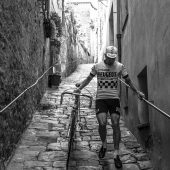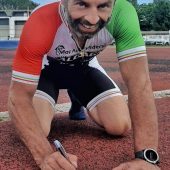Overreaching in indoor cycling: a reflection from Coach Luca Bianchini
27 January 2021In this historic moment, with the world pandemic and all the associated limitations, many people are dedicating more time to indoor cycling. Sports help you fill your days, strengthen your body and your mind, optimize your time and keep yourself in good health. However, some people are beginning to show signs of impatience with the restrictions, and this impatience also turns into a hyperkinesia (an increase in muscular activity that can result in excessive normal or abnormal movements) in terms of training. It is known that sport is addictive and doing without it for a long period of time causes side effects comparable to the ones due to abstinence from substances such as tobacco. The healthy remedy, therefore, is to continue to practice sports, without “overreaching”. Overreaching is what scientists define as an “accumulation of stimuli, whether from training or not, which results in a short-term decrease in performance, with or without signs or related symptoms (physiological or psychological) of a poor adaptation, and where the recovery of performance can take several days or weeks.”

MagneticDays Coach Luca Bianchini offers us an interesting food for thought: “If in a normal day physical activity covers a part of the time, in this particular period in history the percentage of that time increases. The risks produced by an increase in physical activity at home are sometimes unpleasant. The intensity of indoor cycling is certainly greater than the outdoor one and this implies longer recovery times. Excessive sweating leads to a state of chronic dehydration that must necessarily be compensated for. The return to homeostasis is sometimes longer than normal. The first discomforts that are being observed due to the increase in physical activity are latent – continues Coach Bianchini – but they do not go unnoticed to a careful eye. If we used to train 3 or 4 times a week, now we train 7 days a week. Our body is not used to keeping up this rhythm and responds with fatigue. The first organ to give us a signal of this state is the heart. Heart rate struggles to drop adequately during the recovery phase, and stays high even during rest. In maximal efforts, then, it struggles to reach the usual peaks. This is where the use of a valuable tool comes into play: a heart rate monitor. The more advanced ones also provide cardiac variability, data that allows you to evaluate actual recovery. If paying attention to these tools is sometimes underestimated, the lack of serotonin can be stronger stimulant than common sense. If proper attention is not provided to recovery, many people will suffer from chronic overexertion at the end of this period. And this state is the prelude to overtraining, which is a real pathology.“
How to avoid overreaching
Expanding on what Coach Luca Bianchini just talked about, how can you avoid overreaching? And what are the recommended practices? “First of all – continues Coach Bianchini – the variety of training loads: at each high-intensity workout it is necessary to alternate two recovery workouts, in which the heart rate or the reference watts remain under the indications of zone 2 or below 70% of the heart rate threshold. Furthermore, drinking more water than usual, not all at once, but increasing the consumption by at least half a liter (even a liter) throughout the day, is recommended. The body needs water, not only during the indoor cycling session, but also immediately after, and it is even better to add a soluble preparation of salts (magnesium and potassium) and essential amino acids. It is also advisable to take the same supplements right before bedtime, to prevent the onset of nocturnal cramps. It might seem obvious and outdated, but I feel the need to reiterate a concept that I really care about: it is precisely during rest that improvements occur, not during training. Recovery is just as important as training, if not more. Following the instructions of a coach is essential to ensure the correct management of training during the week. If we want to reach the competitive season in the best shape possible, we need to use our head, not only our legs.”













